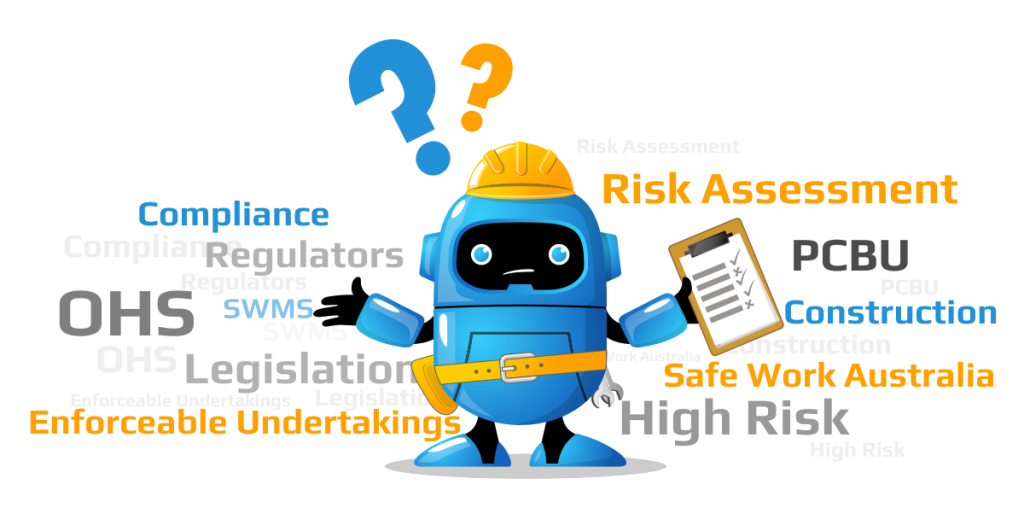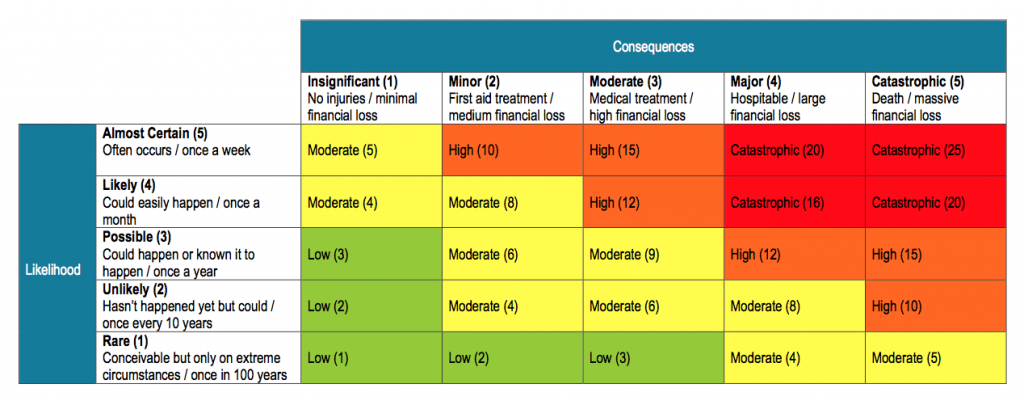3 Signs Safety Software Might Be The Solution For You
Safety software is a relatively new solution to an old problem. Have you ever thought to yourself, there has got to be a better way to stay complaint with safety regulations? Do you ever get frustrated that you have to fill out so many assessments and statements on paper. Do you find yourself missing things in your assessments because you are worried that it’s not in the right format?
These are just some of the frustrations that come with the process of staying compliant with safety regulations. It can have significant effects on your safety culture if you find the process of safety too difficult. If you have ever ran into any of the above, it might be time to consider finding a solution before it becomes too much of a headache that safety goes out the window and all your effort is spent just to be compliant.
In this article we will cover in depth 3 signs that it might be time to consider utilizing safety software before your safety is ignored for compliance.
You’re worried about compliance incase of an incident
Running a business is no easy task. It’s like juggling 10 things at once. When things are going well, it’s a great feeling. But it only takes one slip up or incident to cause everything to come crumbling down. The stress and anxiety of a WHS incident happening in your business is enough to keep anyone up at night. On top of that, if you know you might get slapped with a fine after the incident you’ll always be stressed or worse, you’ll delay reporting an incident. This can lead to huge fines and even jail time. No one wants that.
Safety compliance in the modern day is no simple task. There are a lot of regulations and legislation that you must adhere to in your day to day business. This can become quite a headache and adds to the stress of making sure you have ticked all the boxes. Or worse, leads you to ignoring your requirements and hoping that an incident doesn’t occur. As we have covered in a previous article, incidents happen to even the best of employers who are proactive with safety, its simply the reality of probability. If there is a chance, eventually it will happen.
Ask yourself this. If there was an incident at your workplace tomorrow and it lead to an inspection, would you be confident you would pass? Have you got a solid and refined risk assessment process in place to identify, assess and control risks in your workplace?
If the answer is not a confident yes then it might be time to look at solutions. Safety software like our platform SafeWorkPro allows you to focus on your process more while making the document compliance side of things a worry of the past. While SafeWorkPro won’t solve all of your safety worries, it will help you be more effective with your time so you can spend less time filling out forms and more time focusing on the actions that lead to a safer workplace. We have talked about how your process is more important than your documents in a previous article. In the eyes of the law, the concern is about what you actually do to keep people safe.
If you want to spend more time on safety and less time on the books, then safety software might be the solution for you.
Safety software makes documentation simple and easy
How long does it take you to complete a risk assessment from start to finish? What about a SWMS? Do you find it difficult to complete documents because of all the back and forth that is required between the site, office and in between your workers? If your documentation process is top notch and you have no issues with filling out lengthy paper documents then this might not apply to you. But for those that get frustrated with how much time away from work they have to take to complete documents, this one might be for you.
When the bottle neck for starting a job is the paperwork you need to complete for safety compliance it can become frustrating. It can sometimes feel like too much time is being wasted on paperwork when you could be working. This can lead to rushing through it which defeats its purpose. It also means that you are more likely to skip the processes that really matter to keep people safe.
If you are on a site that needs a SWMS and something changes that requires you to re-evaluate your SWMS, the process starts again and the tools are down until it is done. With safety software, the process of completing documentation is significantly easier. In principle, it is the same but in practice you’re saving time that would otherwise be spent filling a document and running around to get it signed. SafeWorkPro’s simple form based builder allows you to build custom documents which are super simple for your workers to complete on site when needed.
Save the hassle of the back and forth trying to get your documents read and signed by those on site. Have workers fill and sign documents from anywhere on site and have them submitted to the cloud for you to review from any location. SafeWorkPro even lets you get notifications when certain actions happen like a risk rating on a risk assessment matrix being too high or an incident is submitted. SafeWorkPro can help you save time on compliance and let’s you focus on what you do best.
Safety software helps you find old documents quick
Ask yourself this, can you find your risk assessment or SWMS from a job 2 years ago? If you were audited, could you produce it? This is something that isn’t obvious until it is an issue and by then it’s too late. How much of an impact on your day to day operations would a surprise audit have? Would you need to go digging through the back office folders to find the documents required? What a headache!
Even while you are on site, your documents like a SWMS need to be available for everyone to see. While they are there, they are likely to get damaged or degraded by weather. Sometimes, by the time they get stored for safe keeping they are almost falling apart.
With the safety of cloud document storage, SafeWorkPro can store all of your important documents online forever. With all of your documents in one place and neatly organized it’s super simple to find the documents you need, even if they are from years ago. Our software also makes audits quick and easy with next to no disruption in your operations. Export all of the data from your SafeWorkPro site for review without having to spend hours digging through folders, photocopying and physically delivering documents.
Conclusion
If any part of this article resonates with you, it might be time to consider trying out a better solution to using a manual safety process. Beyond just the convenience, SafeWorkPro can help you focus your time on the actions that truly make people safe, not just the actions that make you compliant. At the end of the day, that is what you will be judged on if you have an audit or investigation. Documentation is required of course, but that is simple the surface level when it comes to safety.
If you want to learn more about how SafeWorkPro could help you in simplifying your WHS, reach out to our friendly expert staff for a free, no obligation live demo.
High Risk Construction Work
Not all building projects require a hazard risk analysis. In fact according to Safe Work Australia, construction activities must equal or exceed a cost of $250 000 to be legally defined as a construction project. Nonetheless any worksite that involves a specific type of high risk construction work must comply with OHS legislation Australia, or more specifically the Work Health and Safety Act. This means risk assessments.
OHS Legislation Australia
This legislation can be difficult to understand, with a range of varying regulators and government bodies having their own requirements for the completion of a construction method statement. Nonetheless the risks in construction remain the same no matter where the work is being undertaken. Safe Work Australia’s codes of practice outlines various types of high risk construction work and the methods of risk identification.

Safe Operating Procedures
Safe Work Australia’s codes of practice outline what the PCBU (persons conducting a business or undertaking) is required to do in order to conduct safe operating procedures regardless of the nature of the construction work. Under national work health and safety regulation 297, the PCBU is required to:
• Identify possible hazards that, within reason, could increase risk
• Eliminate the risk to the extent that is possible
• If total elimination is not possible, then minimise the risk through the implementation of control measures
• Maintain control measures through continued reviews and revision so far as it is possible, to ensure the worksite remains compliant with WHS regulations
Enforcement Options
Safe Work Australia has compiled a list of the required licenses workers must attain before undertaking any of these high risk jobs. Without doing so both the worker and the PCBU risk punitive measures from the related regulator.
Completing the required paperwork and attaining the appropriate licenses is vital to ensuring your business does not feel sting of the regulators. Safe Work Australia provides the model of regulation and codes of practice that form the basis of safe work method statements (SWMS) however it is not a regulator itself. Each state has it’s own government regulator but because they’re based on the same framework established under Safe work Australia, their powers and responsibilities are somewhat similar. For example, unlike many other states, there is no Work Safe QLD but instead Workplace Health and Safety Queensland (WHSQ) is the central regulatory authority. WHSQ’s role includes licensing and registrations, industry consultation, reviewing relevant laws as well as the enforcement of a hazard and risk management procedure in the workplace. Their compliance and enforcement options are broad and include:
• Workplace inspections and compliance requests
• A variety of notices including prohibition, improvement, non-disturbance, electrical safety protection and unsafe equipment
• On the spot fines ranging from $600 000/five years jail for PCBUs who have committed category one breaches (risk of serious injury or death) to $100 000 for category three breaches (failure to comply with notices)
• Seizure of equipment of substances
• Suspension or cancellation of license or accreditation
• Enforceable undertakings (legally binding agreements)
To reiterate: each state or jurisdiction has different regulators but the above enforcement options available to WHSQ are commonplace in other regulatory authorities. For more information Safe Work Australia has developed a thorough code of practice that systematically explains the WHS regulations.
Risk Reporting: what is a dangerous incident?
This is one of the many risk assessment questions that construction businesses ask but the answer is not as straightforward as you would assume. ‘Dangerous incident’ is a term that comes with certain responsibilities under OHS laws and has immediate effects on potentially any workplace risk assessment.

A dangerous incident can be classified as a workplace event that exposes any worker, manager or other person to a serious health or safety risk. There are numerous generic hazards and health risks at work that are identified under the Work Health and Safety Act 2011. These include:
- The breakdown or partial breakdown of a structure
- The breakdown or collapse of a shoring supporting an excavation/tunnel
- The failure, breakdown, damage or collapse of a plant required to be authorised under risk assessment regulations
- The inundation of mud, water or gas into an underground excavation/tunnel
- The failure of a ventilation system in an underground excavation/tunnel
- The fall from a height (at least 2-3 metres) of any substance, plant or object
- The unrestricted release of gas, steam or a pressurised material
- An explosion, implosion or fire
- The unrestricted release, spillage or leak of a substance (see hazardous substance risk assessment)
- An electrical shock not classified as a serious electrical incident or a dangerous electrical event*
As soon as a person conducting a business or undertaking (PCBU) becomes aware of a dangerous incident then they are required to immediately notify the relevant workplace health and safety regulator. For a list of the various regulators for each Australian jurisdiction, check Safe Work Australia.
*Note: in Queensland, a serious electrical incident or a dangerous electrical event has a different notification process under the Electrical Safety Regulation 2013.
Compliance Risk Assessment Matrix
When it comes down to it, the risk assessment matrix is just part of the broader risk assessment process that aims to make your workplace compliant with OHS legislation Australia. So to say there is a Workcover Risk Assessment Matrix would be inaccurate.
But health risks at work are a common part of any job and ensuring the health and safety risk assessment matrix is both properly completed and totally understood is a fundamental part of remaining compliant. To explain risk assessment properly we must also explain the compliance risk assessment matrix.
A matrix in this context works as a risk assessment scale of sorts. It gives the likelihood of a risk occurring and the severity of that risk’s consequence a numerical value. These two numbers are multiplied and the total number equates to level of risk a job is likely to involve (see table below). It is a flawed risk assessment method because it cannot deal with every possible scenario and its categorisations are ambiguous at best. Nonetheless the risk assessment matrix remains the main way to discern risk in a numerical form across Australia.






